The following was written by Tony L’Orsa, and is republished here with permission from the author. It is a continuation of his work exploring the history of local rural schools. To read Tony’s post about the Driftwood School, also celebrating its 100th anniversary in 2020, click here.
This year marks the 100th anniversary of the opening of the former Glentanna School. A brief history and a few pictures of the school are presented below to help preserve the memory of the school and those who passed through it.
The original school at Glentanna was opened in 1920 to serve an increasing number of families arriving in the area with hopes of farming in the newly accessible farmlands of the Bulkley Valley. Some of the new farmers were veterans of the First World War who were taking up farms under the provisions of the Soldier Settlement Act.
The school was situated on Lot 861, in the forks of the junction between Telkwa High Road and Maney Road. John Lapadat, Sr., provided the land, which was eventually deeded to the Glentanna School Board by Conrad Tugnum in 1938.
The 15ft by 28ft schoolhouse was built of logs. It was described as “neat and warm” in a 1921 School Inspector’s Report, and as “warm and cheery” by teacher Florence Cliff in a report to the Teachers’ Bureau in 1923.
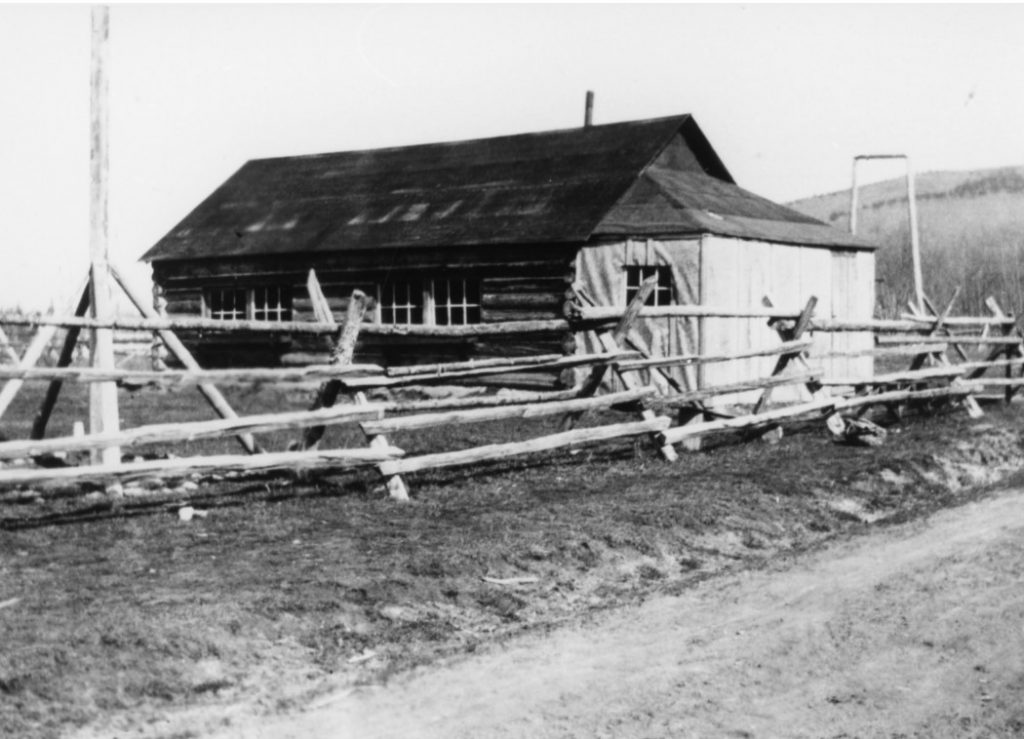
The first teacher was Wilhelmina Lennox. She boarded with the Evitt family and Olive Evitt Collison remembered that she taught the Evitt children to dance the minuet in her spare time. She also gave them the picture of herself, reproduced below.
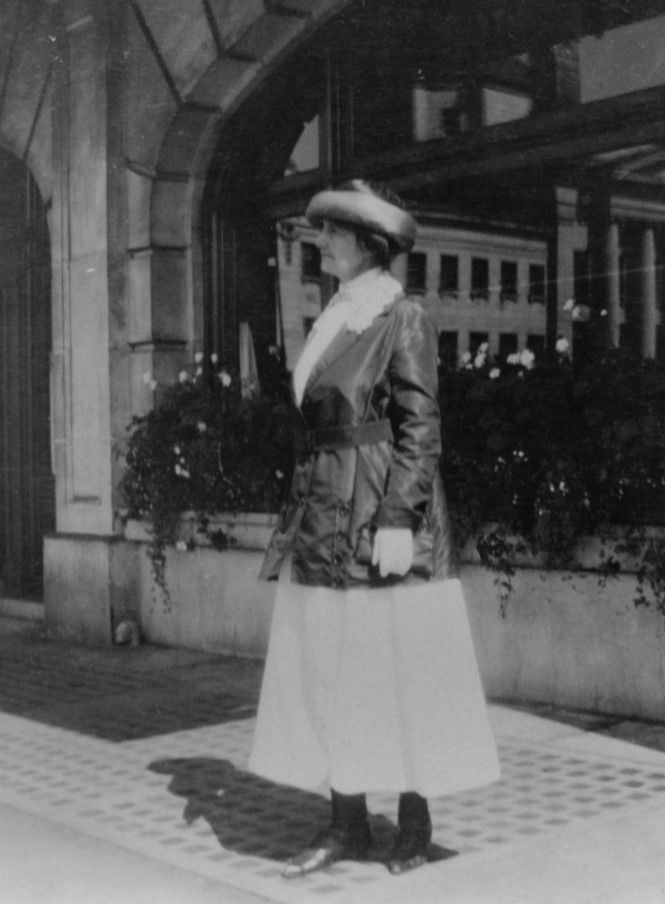
A new schoolhouse at Glentanna was built in 1941 on the same property as the original log school. Alf Giddings of Telkwa was the contractor and the contract sum was $2,298.94, including a woodshed and two outhouses. The new school measured 24ft by 32ft and was of two-by-four frame construction, built to specifications that did not include insulation. In winter, it was not warm and cheery.
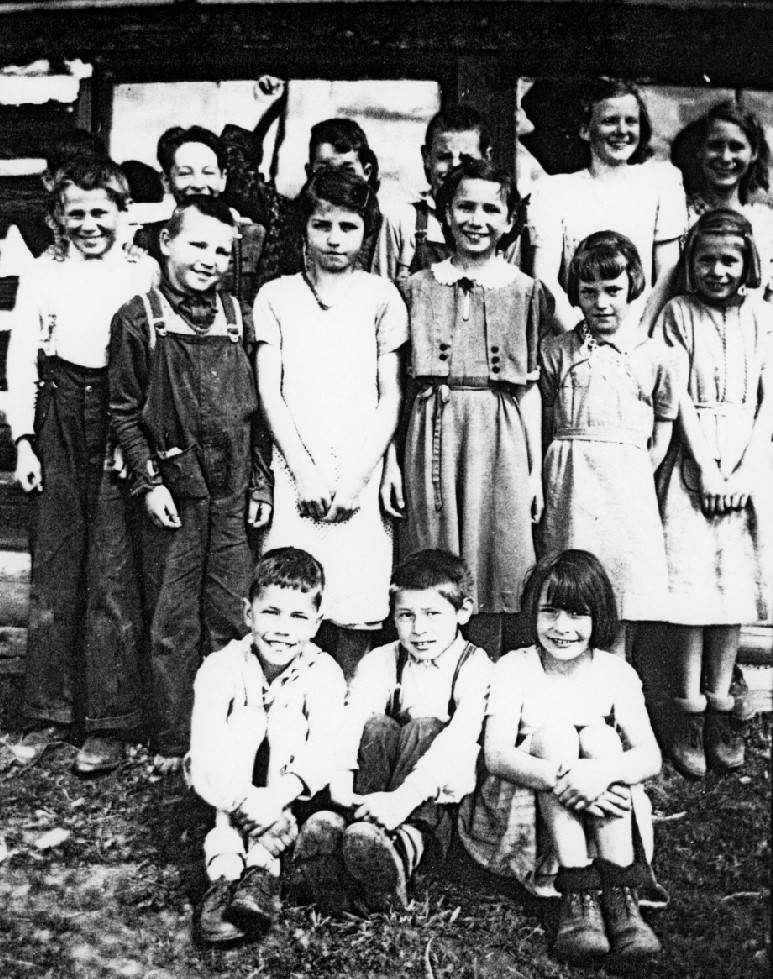
Florence Dalpé Oulton (teacher 1945-1949) wrote in Bulkley Valley School Days that school did not start until 9:20am in winter. On really cold mornings, although the desks were pulled over to the heater, the children wore coats and mittens until nearly noon. She also described the new Glentanna School as she found it in the fall of 1945:
“One wall comprised tall windows and two other walls were covered with blackboards. The door opened into a vestibule which served as cloakroom and storage room. Lunches were kept on the shelf in the vestibule until the weather became too cold.
The school was attractively painted inside and, with the help of the pupils’ work, a few pictures, and a bit of crepe paper, we soon had it looking rather inviting. The furnishings were several desks of assorted sizes nailed in groups of three or four onto long wooden runners, a teacher’s desk and chair, two maps, a set of low shelves, text books, programmes of study, and the inevitable water bucket and dipper by the door. In the middle of the room stood a large coal and wood heater. There was no running water or electricity. Hanging on long hooks from the ceiling were two gas lamps, used only when some function was held in the school at night.”
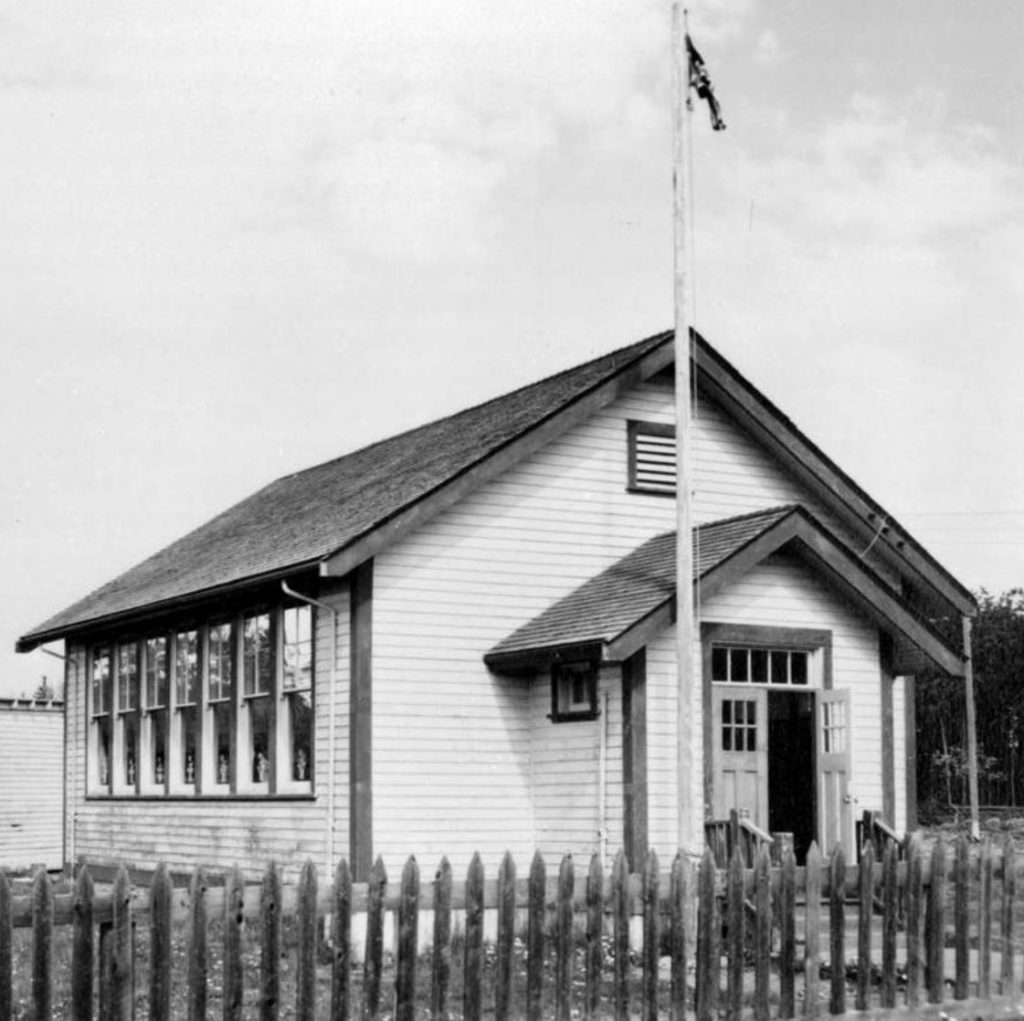
A small detached three-room teacherage was built next to the school in 1944. Electricity was brought to the school and teacherage during the summer of 1948. Al Wall contracted to wire both buildings for a total of $296.70, and four incandescent light bulbs were placed in the classroom. In November 1956 the School Board approved the installation of a telephone in the teacherage.
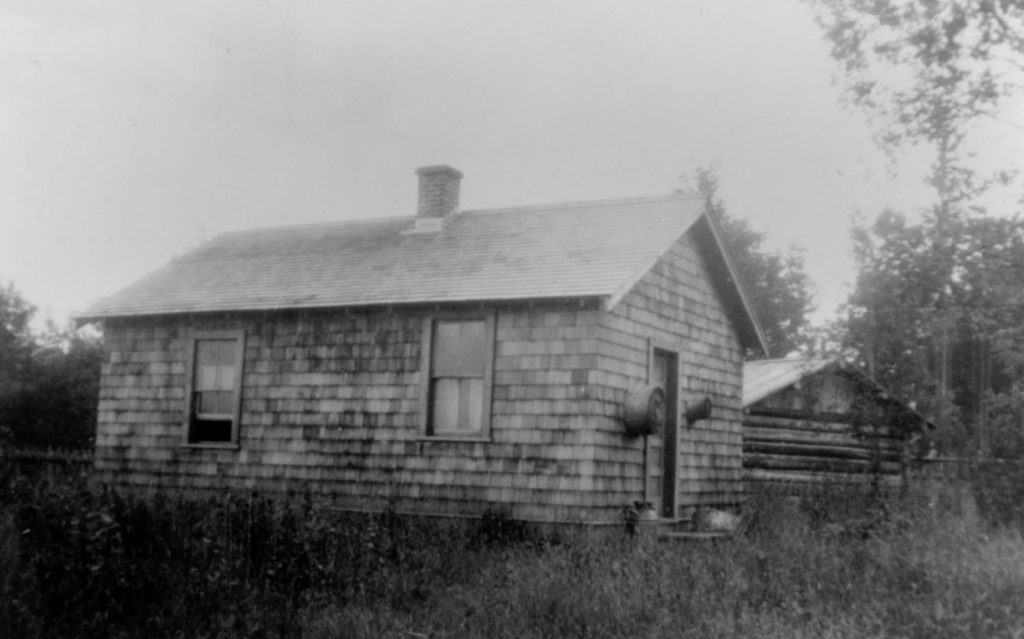
From 1920 through 1962, annual enrolment at Glentanna School averaged about 14 pupils, with a low of 8 and a high of 20. The minimum number of children required to keep a school open was 8, and some started at a very young age in order for the school to achieve that number. Early school records show several five-year-old’s in grade one, and Len Evitt started school at age four.
Although the school was an elementary school providing grades one through eight, a few older students taking high school correspondence courses were also present at times.
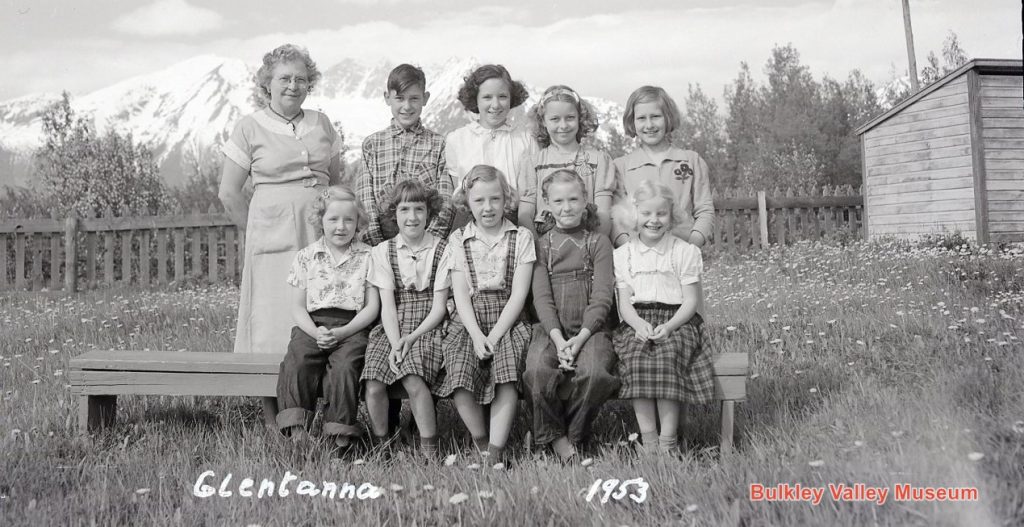
Glentanna School was closed in June 1962 and the children were bussed to Driftwood Creek School or to Smithers schools, depending upon their grade. In 1965 Driftwood closed and everybody was bussed to Smithers.
In 1968, it was decided to sell the school building and teacherage by tender, but to retain the land. At a meeting of the Board of Trustees on the 4th of November, 1968, the bid of Jack Paczinsky in the amount of $601 was accepted. He had the buildings dismantled and a house constructed of the materials. The land (0.57 acres) was finally sold in April 1986 by tender to Carol Cote of Smithers for $1,950, and she shortly thereafter resold the property to Bill Brandsma, the owner of the former Lapadat/Tugnum farm.
How did Glentanna get its name? The whole story behind the selection of Glentanna as the name for the short-lived post office at Glentanna in 1909 has apparently not been preserved, but the ultimate source of the name is probably the Glentana (now Glen Tanar) estate, about 48 km west-southwest of Aberdeen, Scotland.
Suggestions for Further Reading:
https://tunearch.org/wiki/Annotation:Lodge_of_Glen-tana_(The)
https://www.glentanar.co.uk/about/our-story .
Fouin, F.L.P., 2009, Glen Tanar, Valley of Echoes and Hidden Treasures: Leopard Press, Inverurie, Aberdeenshire, 310 pages.
Herman, Della (Editor), 1982, Bulkley Valley School Days: School District No. 54 (Bulkley Valley), Smithers, British Columbia, 120 pages. Available online through the Bulkley Valley Museum at https://search.bvmuseum.org/permalink/descriptions7010.